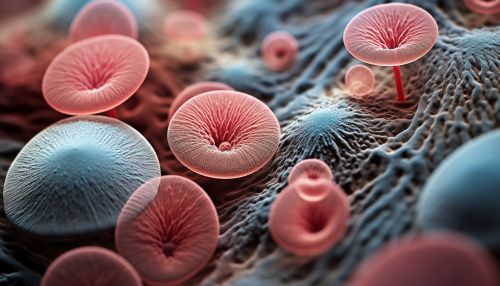Mechanisms of Microbial Biotechnology in Environmental Protection
Introduction
Microbial biotechnology refers to the use of microorganisms in technological applications, particularly in industry, agriculture, medicine, and environmental protection. This field is a fusion of several disciplines including microbiology, molecular biology, biochemistry, and genetic engineering. This article focuses on the mechanisms of microbial biotechnology in environmental protection, detailing the various ways microorganisms are used to protect and restore the environment.


Microbial Biodegradation
One of the primary ways microbial biotechnology is used in environmental protection is through biodegradation, the process by which organic substances are broken down by living organisms. Microorganisms, particularly bacteria and fungi, are often used to degrade environmental pollutants. These microorganisms are capable of breaking down a wide range of pollutants, including petroleum hydrocarbons, polychlorinated biphenyls (PCBs), and heavy metals.
Mechanisms of Biodegradation
Microorganisms degrade pollutants through a variety of mechanisms. Some microorganisms produce enzymes that break down pollutants into less harmful substances. For example, bacteria in the genus Pseudomonas produce enzymes that can degrade petroleum hydrocarbons into carbon dioxide and water. Other microorganisms, such as certain species of fungi, can bind heavy metals, thereby reducing their toxicity.
Biofiltration
Another application of microbial biotechnology in environmental protection is biofiltration, a pollution control technique that uses living material to capture and biologically degrade pollutants. In biofiltration systems, polluted air or water is passed through a bed of microorganisms. The microorganisms capture and degrade the pollutants, converting them into less harmful substances.
Mechanisms of Biofiltration
The mechanisms of biofiltration involve both physical and biological processes. Physically, pollutants are captured by the biofilm, a layer of microorganisms and extracellular polymeric substances (EPS) that forms on the surface of the biofilter. Biologically, the microorganisms in the biofilm degrade the pollutants through metabolic processes. Some pollutants are used as a source of carbon and energy, while others are transformed into less harmful substances through co-metabolism.
Bioremediation
Bioremediation is another important application of microbial biotechnology in environmental protection. Bioremediation involves the use of microorganisms to remove or neutralize pollutants from a contaminated site. Bioremediation can be used to treat a variety of pollutants, including petroleum hydrocarbons, heavy metals, and pesticides.
Mechanisms of Bioremediation
The mechanisms of bioremediation involve the metabolic activities of microorganisms. Some microorganisms are capable of using pollutants as a source of carbon and energy, thereby removing them from the environment. Other microorganisms can transform pollutants into less harmful substances through co-metabolism. In some cases, microorganisms can immobilize pollutants by binding them to their cell surface or by precipitating them as insoluble compounds.
Microbial Fuel Cells
Microbial biotechnology also has potential applications in renewable energy production. Microbial fuel cells (MFCs) are devices that use microorganisms to convert chemical energy into electrical energy. MFCs have the potential to generate electricity from a variety of organic wastes, thereby reducing pollution and providing a source of renewable energy.
Mechanisms of Microbial Fuel Cells
The mechanisms of microbial fuel cells involve the metabolic activities of electroactive microorganisms. These microorganisms are capable of transferring electrons to an electrode, thereby generating an electric current. The electrons are transferred through a variety of mechanisms, including direct electron transfer, mediated electron transfer, and conductive pili (also known as nanowires).
Conclusion
Microbial biotechnology plays a crucial role in environmental protection. Through processes such as biodegradation, biofiltration, bioremediation, and microbial fuel cells, microorganisms are used to degrade pollutants, capture and neutralize harmful substances, and generate renewable energy. As our understanding of microbial biotechnology continues to grow, so too will its potential applications in environmental protection.
